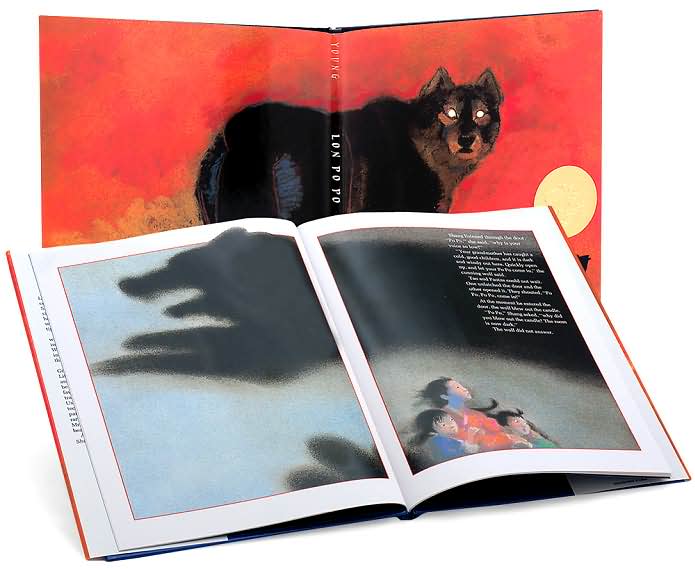Author / Illustrator : Ed Young
Publisher : Philomel Books
ISBN : 0399216197
(Buy / Borrow)
You might or might not be surprised by this, depending upon if you've been reading the posts from the start of this humble little blog, but yet again I've found myself having some difficulty choosing a subject for today's entry. The theme, like before, is something seemingly narrow enough that finding one standout piece shouldn't have been a problem. It's folk/fairy tales, and while it's true that this category isn't what one might consider all that narrow, I've chosen to explicitly focus on those who have received either the Caldecott Medal or Caldecott Honor. That should have been easy enough, right? Wrong.
Perhaps my joy in rediscovering the genre of picture books has made these selections exponentially more difficult, but when you have the likes of The Three Pigs (David Wiesner), Fables (Arnold Lobel), Rapunzel (Paul O. Zelinsky), and countless other amazingly illustrated Caldecott recipients to choose from, this criteria hardly narrows one's choices. Ultimately, my choice of a subject this week was based upon three additional factors that I've imposed : 1. The book must have been available at my local library, 2. The book could not have been created by any of the previous authors whose wonderful artwork I've already covered (sorry David Wiesner), and 3. The book must have been written and illustrated by the same individual. I specified the last bit for the same reason I tend to favor the work of Billy Joel over that of Elton John (and lyricist Bernie Taupin). I am simply amazed by individuals who are capable of creating every aspect of their art form, and do so with such a high level of skill.
With this extended criteria in hand, I arrived at Lon Po Po as my subject. As an added bonus, I was treated to a traditional Chinese spin on a story that I've loved since I was a small child, and which has been retold over the course of time in just about every form (books, theatre, animation, live action film). I realize that, because this sub-genre is folk/fairy tales, the story-line was not entirely "created" by Ed Young. It is important to remember, however, that he did have to translate it from the original Chinese, and translation is something that can prove to be as difficult as creating a story from the very beginning. It is that somewhat unique action; an author/illustrator having to finish the book for himself before creating his own version of it for others to finish, that truly spoke to me.
What I first noticed about this wonderful book, was Mr. Young's decision to integrate panel art, which is a style I've previously only ever seen used in the creation of coromandel screens. It was a lovely inclusion to see because of its close ties to Chinese culture, and significantly contributes to the overall feel of the story as it progresses.
Speaking of the progression of the story, I want to express how interesting it is to reflect on the similarities and differences between Lon Po Po and the Little Red Riding Hood story that most American children grew up hearing. I see a lot of potential for classroom lessons or exercises here, such as the demonstration and application of comparing and contrasting, text to self connections (with included class discussion about which version of the story students prefer and why), or even an art project in which students try to express a certain idea effectively with the use of watercolor painting, similar to the way Ed Young did in his book.
There is literally something that can be used as a lesson or exercise for students of every learning style in Lon Po Po. More importantly, it is very likely that students will happily embrace activities such as these, further developing their understanding of the underlying concepts and strengthening their knowledge for further application. I would even go so far as to say that Ed Young and his wonderfully illustrated children's books would be a great way to introduce young American students to author study. His close connection with his roots in China is very pronounced in his work, and there are many aspects of his life, both as an artist and as a human being, that will fascinate and perhaps even inspire students to investigate and learn. I know that Lon Po Po has done this for me, and I highly encourage you to find a copy and finish the book as well.

Another showstopper. Your posts just get better and better, and from the point you started at, you're soaring. I love how this post (and all of your posts, really) are a teaching tool in themselves. You provide a very comprehensive view of all sides of whatever you are talking about. I like that you talked about Young's work and provided a lot of information but in a very subtle way. Your style is flawless and speaks volumes without sounding haughty or out of touch with your audience. I love the work of Ed Young. Thank you for revealing his brilliance for those that might not be as familiar.
ReplyDelete